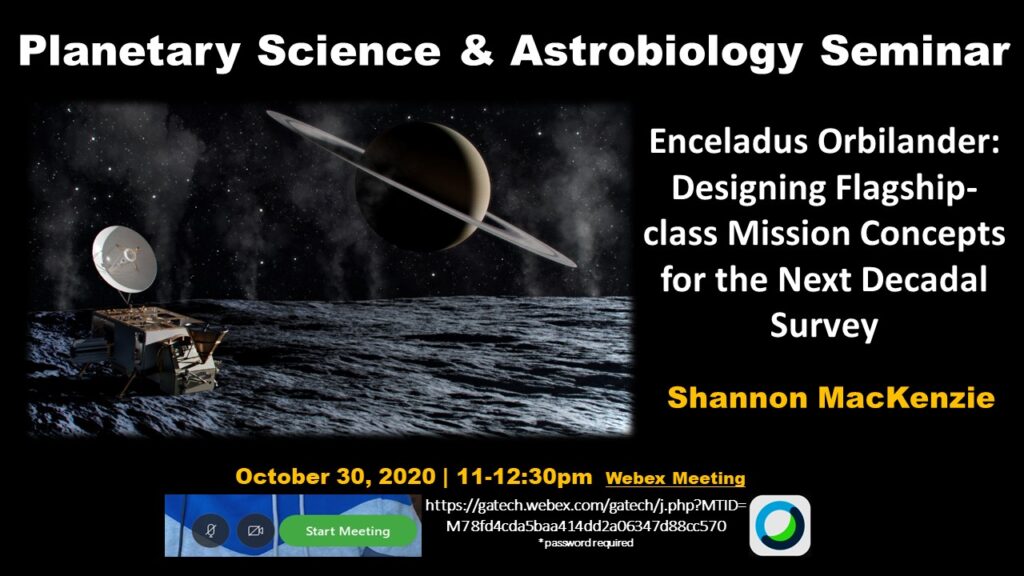
Cassini revealed Saturn’s moon Enceladus as the host of a subsurface ocean where the key factors of habitability appear to be collocated. A return mission is needed to determine if that habitability potential supports life, but how should such a search for life be conducted? What biosignatures might we target? What geochemical and geophysical investigations would provide the context most useful for interpreting biosignature searches? In preparation for the 2023-2032 Decadal Survey, we explored what Flagship-class (>$2B) missions answering these questions might look like. In this talk, I’ll describe how we defined the driving science goals and objectives, selected a representative payload, and evaluated the science value of different architectures. I’ll then present the result of our study, Orbilander, a mission concept where a single spacecraft first orbited and then landed, and why it represents a compelling option for returning to Enceladus to search for life.